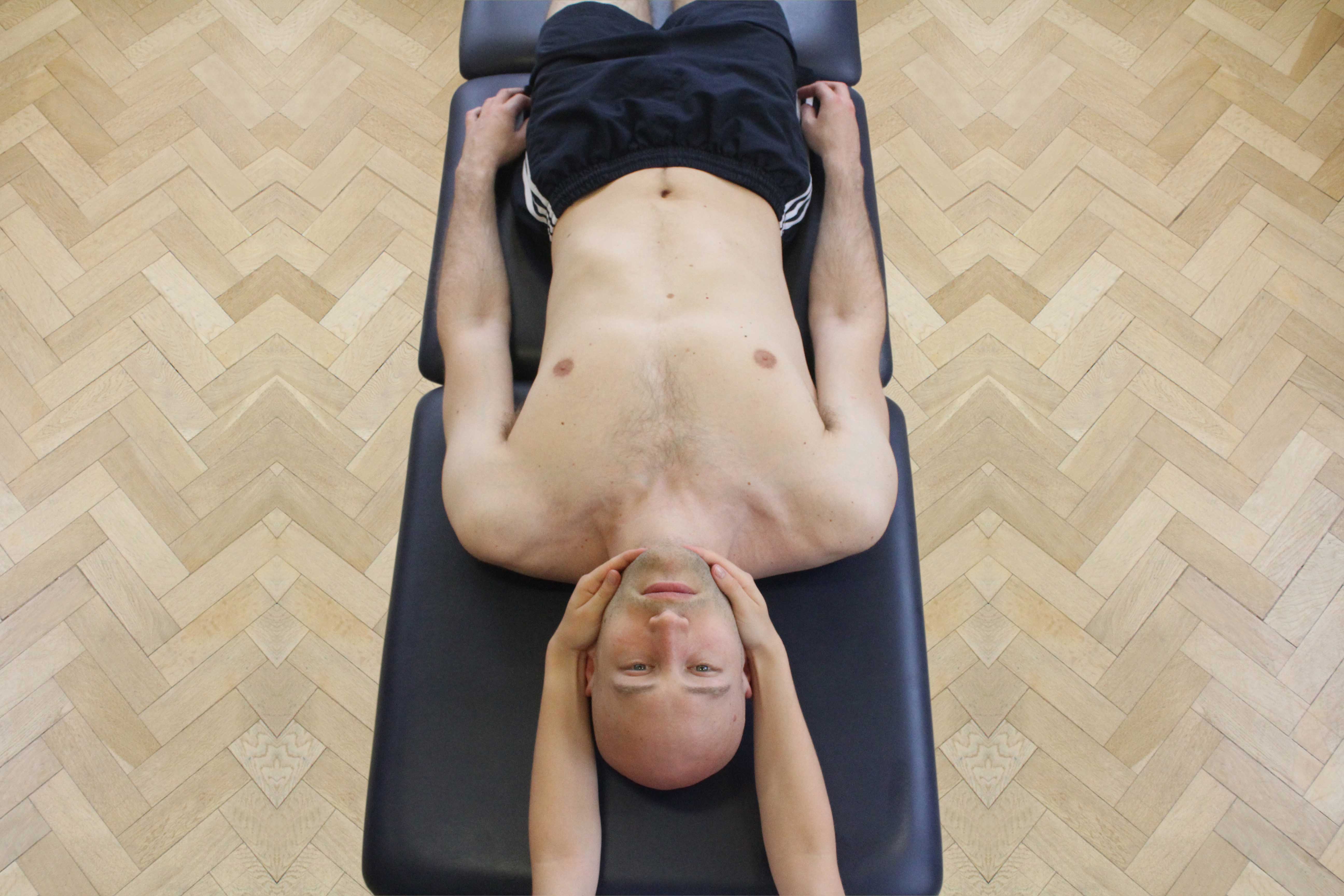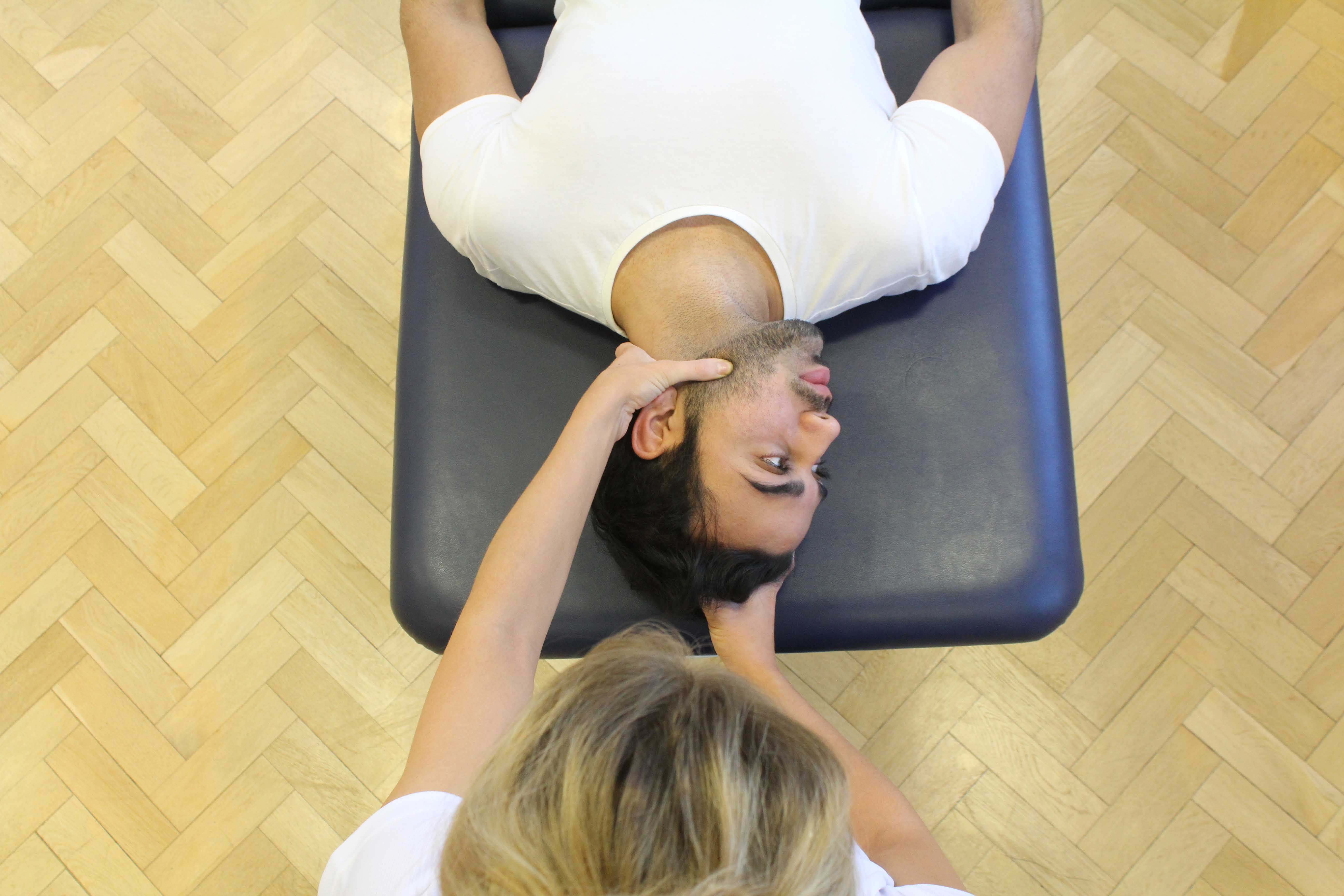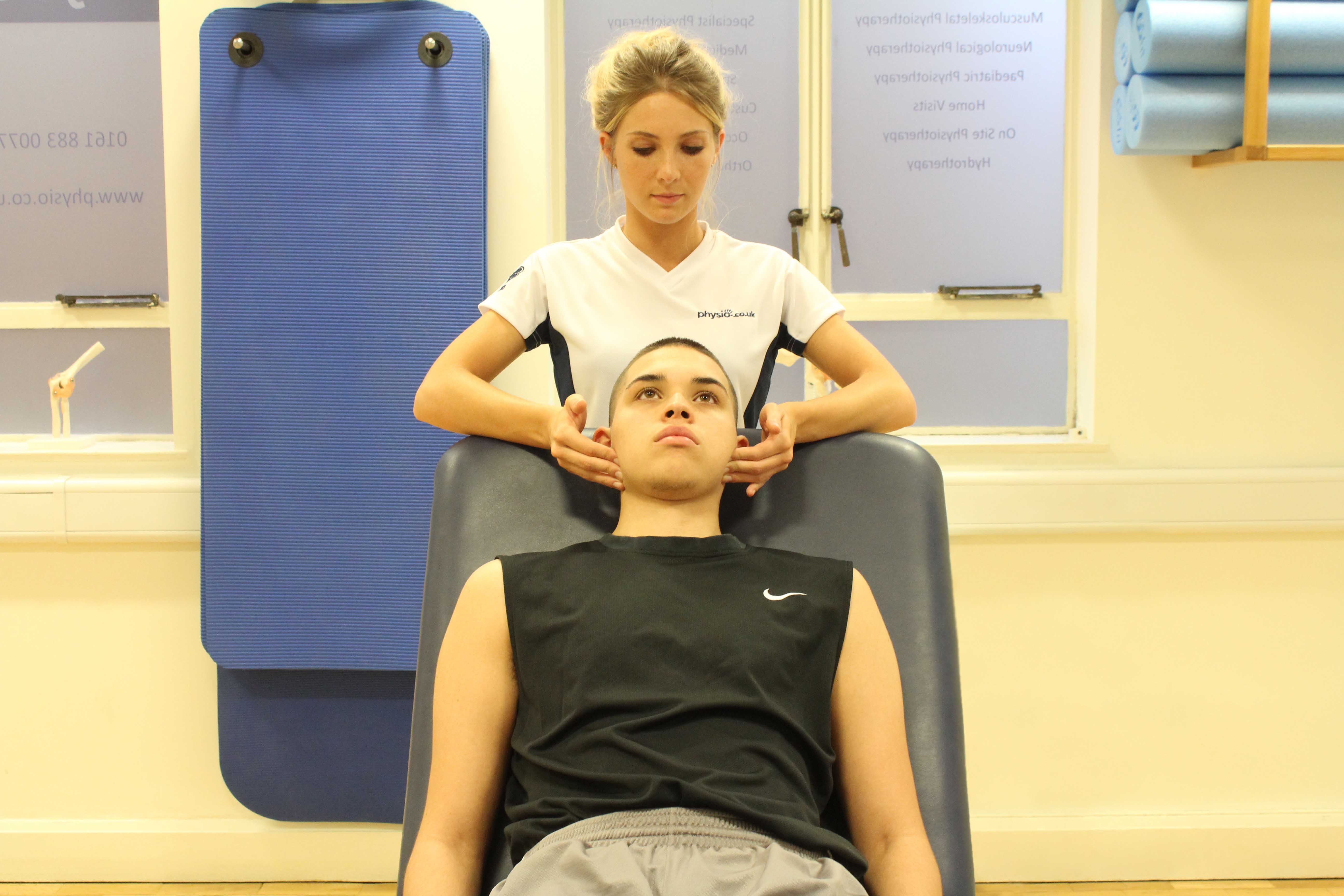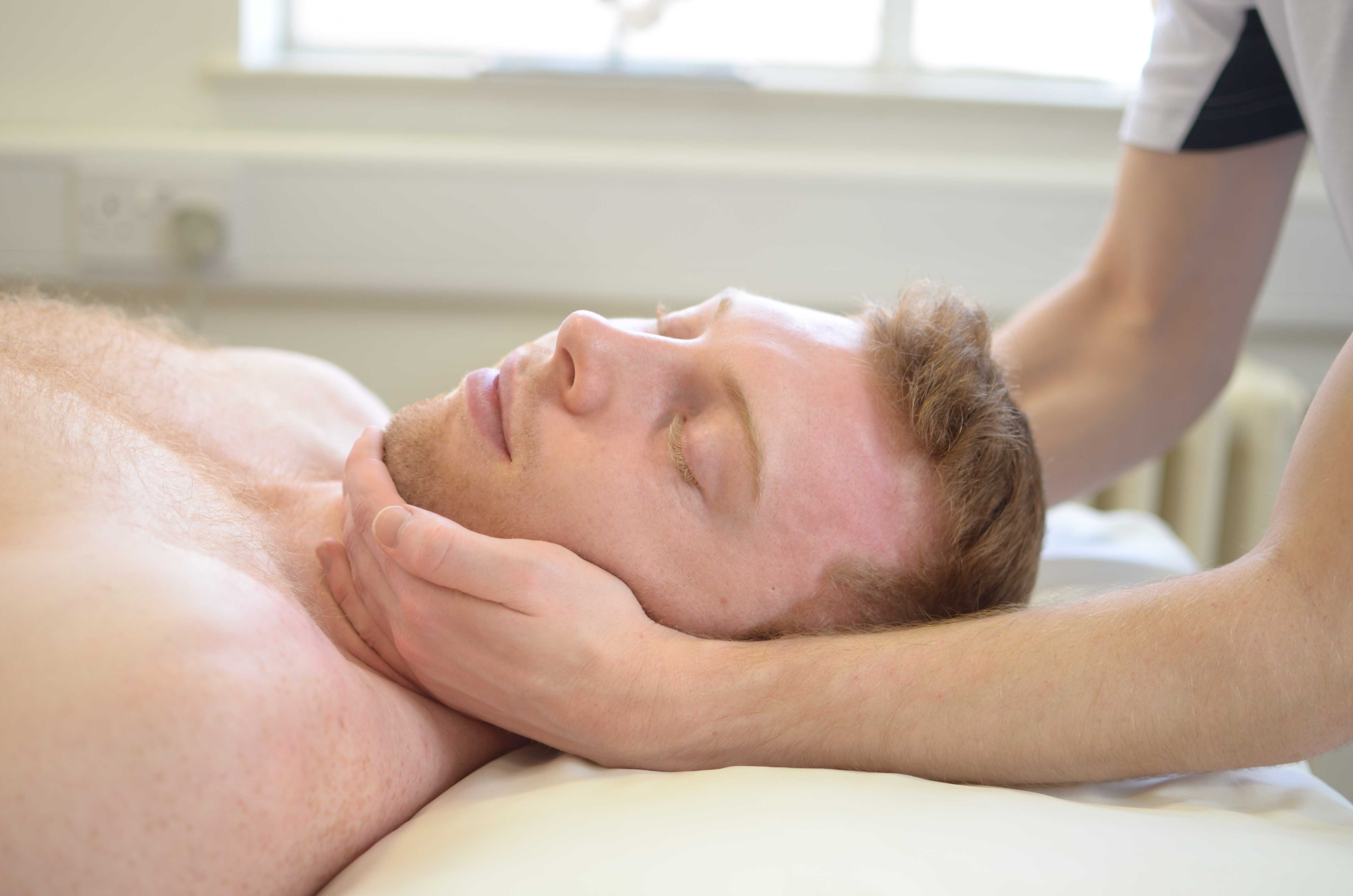What is a jaw pain?
Jaw pain in commonly caused by problems with the temporomandibular joint. There are two temporomandibular joints in the human body, one on each side of the jaw. Pain or dysfunction of one or both of these joints is known as a temporomandibular joint disorder. Physiotherapy is a successful treatment for temporomandibular joint disorder.
 Above: Massage and mobilisations of the jaw to releive stiffness and aching
Above: Massage and mobilisations of the jaw to releive stiffness and achingWhat causes a temporomandibular joint disorder?
Temporomandibular joint disorders are commonly caused by;
- Muscular problems (especially in the muscles involved in chewing)
- A problem with the fibrocartilage disc within the joint
- Arthritis
 Above: Massage and mobilisations of the jaw to releive stiffness and aching
Above: Massage and mobilisations of the jaw to releive stiffness and achingWhat are the symptoms of a temporomandibular joint disorder?
Temporomandibular joint disorders can cause a wide range of symptoms. These include jaw pain, ear pain and jaw clicking, popping and locking. Other symptoms include:
 Above: Soft tissue massage and mobilisation of the jaw to relieve stiffness and pain
Above: Soft tissue massage and mobilisation of the jaw to relieve stiffness and painWhat should I do if I have a temporomandibular joint disorder?
Temporomandibular joint disorders are often treated by your physiotherapist and your dentist. Unless your problem is obviously being caused by a problem with your teeth, it is sensible to arrange a physiotherapy appointment first. If necessary, Physio.co.uk will liaise with your dentist / GP regarding your treatment.
To arrange a physiotherapy appointment call Physio.co.uk on 0330 088 7800 or book online.
What shouldn't I do if I have a temporomandibular joint disorder?
If you have a TMJ disorder you should not ignore your problem. You should arrange a physiotherapy appointment and, in the meantime, avoid eating chewy food and slice large food items, such as apples, into smaller pieces.
 Above: Massage and mobilisations of the jaw to releive stiffness and aching
Above: Massage and mobilisations of the jaw to releive stiffness and achingPhysiotherapy for temporomandibular joint disorders
Initially your physiotherapist will be able to assess your jaw and the surrounding structures in order to provide you with a diagnosis and explain why you have developed a temporomandibular joint disorder. Treatment can consist of:
- Ultrasound treatment
- Joint manipulations and mobilisations
- Relaxation techniques
- Acupuncture
- Massage
- Proprioceptive Exercise

 0330 088 7800
0330 088 7800


































